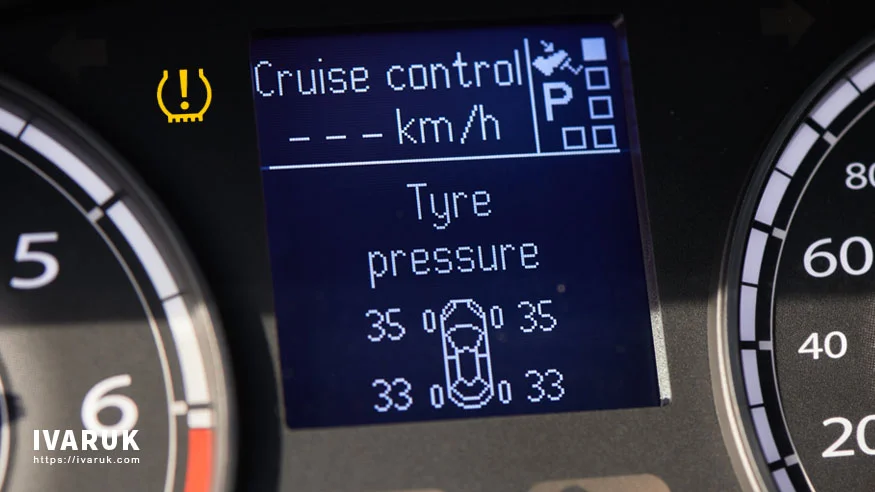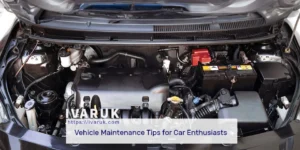Table of Contents
ToggleMaximizing Tyre Lifespan and Safety: The Ultimate Guide to Tyre Maintenance
In the world of car maintenance, one of the things that is given less attention is tyre maintenance. Yet, your tyres play a pivotal role in ensuring your safety on the road. Proper tyre maintenance not only extends the lifespan of your tyres but also enhances your vehicle’s performance and fuel efficiency. Neglecting your tyres can lead to various issues, including reduced traction, increased risk of blowouts and flats, decreased fuel efficiency, uneven tyre wear, and compromised vehicle handling and safety. In this comprehensive guide, we will explore 12 essential tips to make your tyres last longer and keep you safe on your journeys.
Why Proper Tyre Maintenance Matters
Before we delve into the specific tips, it’s crucial to understand why tyre maintenance matters. Neglected tyres can result in a range of issues, including:
- Reduced traction, especially in adverse weather conditions.
- Increased risk of blowouts and flats.
- Decreased fuel efficiency due to increased rolling resistance.
- Uneven tyre wear, leading to premature replacement costs.
- Compromised vehicle handling and safety.
Now that we’ve highlighted the significance of tyre maintenance, let’s move on to our first tip.
Revitalize Your Ride with IVARUK Tyre Services!
Our expertise in Tyre Maintenance and Wheel Services ensures your safety and extends tyre lifespan.
Discover competitive prices across the UK, backed by our service guarantee. Contact us!
If you’re ready, let’s dive into Tip 1: Regularly Check Tyre Pressure. Once we complete each section, we’ll move on to the next tip in the table of contents. Don’t miss these valuable insights into tyre maintenance!
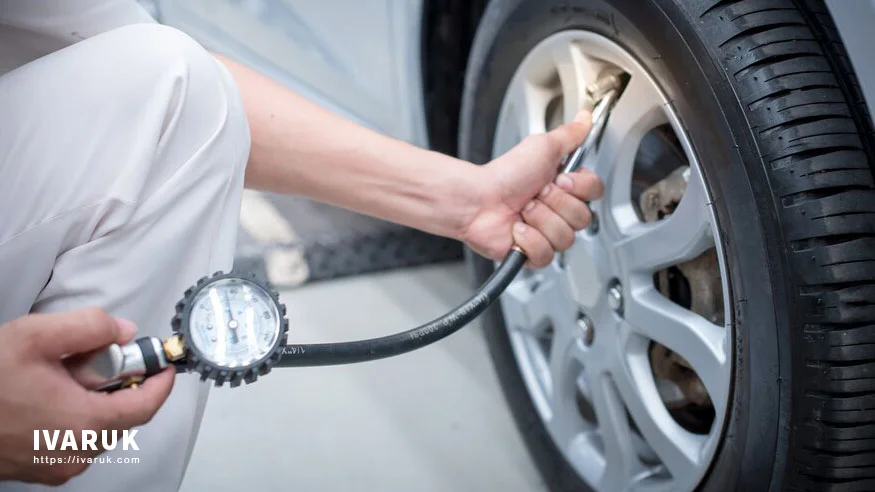
Tip 1: Regularly Check Tyre Pressure
The Importance of Proper Tyre Pressure
Proper tyre pressure is a fundamental aspect of effective tyre maintenance, and Tip 1, “Regularly Check Tyre Pressure,” highlights its importance. Here’s why maintaining the correct tyre pressure matters:
- Improved Fuel Efficiency: Properly inflated tyres reduce friction, enhancing fuel efficiency. Remember! During the specified research. Underinflated tyres can decrease gas mileage by up to 0.2% for every 1 psi drop in pressure.
- Enhanced Tyre Lifespan: Maintaining the right pressure ensures even wear, extending tyre lifespan. Overinflated tyres wear in the centre, while underinflated ones wear on the edges.
- Better Handling and Safety: Properly inflated tyres provide optimal traction and grip, especially in emergencies or adverse conditions, improving overall vehicle safety.
- Smoother Ride: Correctly inflated tyres lead to a more comfortable ride by reducing vibrations and jolts.
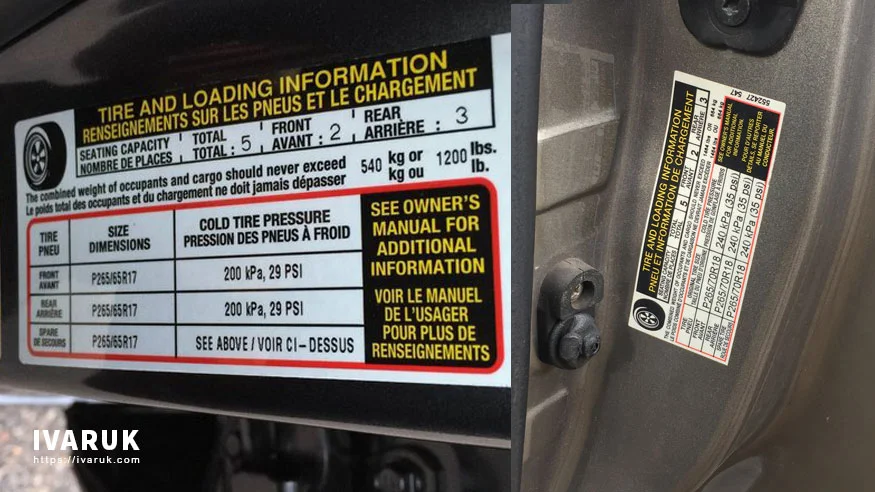
How to Check Tyre Pressure
Checking tyre pressure is a straightforward process:
- Find the Recommended Pressure: Consult your vehicle’s owner’s manual or the driver’s door jamb sticker for the manufacturer’s recommended tyre pressure.
- Use a Reliable Tyre Gauge: Invest in a quality tyre pressure gauge for accurate readings.
- Check When Cold: For accuracy, measure tyre pressure when the tyres are cold, as pressure increases while driving.
- Remove the Valve Cap: Unscrew the valve cap from the tyre’s valve stem.
- Attach the Gauge: Press the gauge onto the valve stem to take a reading when you hear a hiss of air.
- Read the Pressure: The gauge displays the tyre pressure. Compare it to the recommended pressure. Add air if too low, and release air if too high.
- Repeat for All Tyres: Remember to check all four tyres, including the spare where applicable.
Consequences of Incorrect Tyre Pressure
|
Underinflated Tyres |
Overinflated Tyres |
| Reduced fuel efficiency | Uncomfortable ride |
| Uneven tyre wear | Increased risk of impact damage |
| Increased risk of blowouts | Reduced traction on slippery surfaces |
Driving with incorrect tyre pressure can lead to serious consequences.
Underinflated Tyres:
- Reduced fuel efficiency.
- Uneven tyre wear.
- Increased risk of blowouts.
Poor handling and traction.
Overinflated Tyres:
- Uncomfortable ride.
- Increased risk of impact damage.
- Reduced traction on slippery surfaces.
By following these steps and maintaining proper tyre pressure, you’ll improve tyre lifespan, contributing to a safer and more efficient driving experience.
Of course, in today’s cars, thanks to technology and the use of pressure sensors (TPMS), it is possible to control the tyre pressure from inside the car cabin.
Tip 2: Rotate Your Tyres
The Importance of Tyre Rotation
Tyre rotation is an essential tyre maintenance practice that involves repositioning each tyre on your vehicle to ensure even wear.
Understanding why tyre rotation matters is key:
- Balanced Wear: Front and rear tyres experience different forces while driving. Front tyres wear more quickly due to steering and braking, while rear tyres wear more evenly. Rotating your tyres balances wear, extending their lifespan.
- Improved Handling: Even tyre wear enhances handling and stability, especially during turns and manoeuvres.
- Enhanced Safety: Consistent tread depth across all tyres improves traction, reducing the risk of accidents, particularly in wet or slippery conditions.
- Cost Savings: Extending your tyres’ lifespan means long-term savings on replacements.
When and How to Rotate Your Tyres
The timing and method of tyre rotation depend on your vehicle type. A common recommendation is to rotate tyres every 6,000 to 8,000 miles or as specified in your vehicle’s manual. Here’s a general guide:
- Identify Tyre Rotation Pattern: Check your vehicle’s manual for the recommended rotation pattern, like “front-to-back,” “rearward cross,” or “X-pattern,” to ensure regular position changes.
- Lift the Vehicle: Safely lift your vehicle using a jack and secure it with jack stands, following safety procedures.
- Remove and Reinstall Tyres: Remove tyres as per the designated pattern, keeping track of each tyre’s position for consistent rotation.
- Check Tread Depth: While off, inspect tread depth and overall condition, replacing worn or damaged tyres.
- Torque Lug Nuts: When reinstalling, torque lug nuts to the manufacturer’s specifications for secure fastening.
Benefits of Regular Tyre Rotation
Regular tyre rotation offers several benefits, including:
- Extended Tyre Lifespan: Promoting even wear means more miles before replacements.
- Improved Performance: Better handling, especially in challenging conditions.
- Enhanced Safety: Consistent tread depth and traction for safer driving.
- Savings: Longer-lasting tyres mean fewer replacements and cost savings.
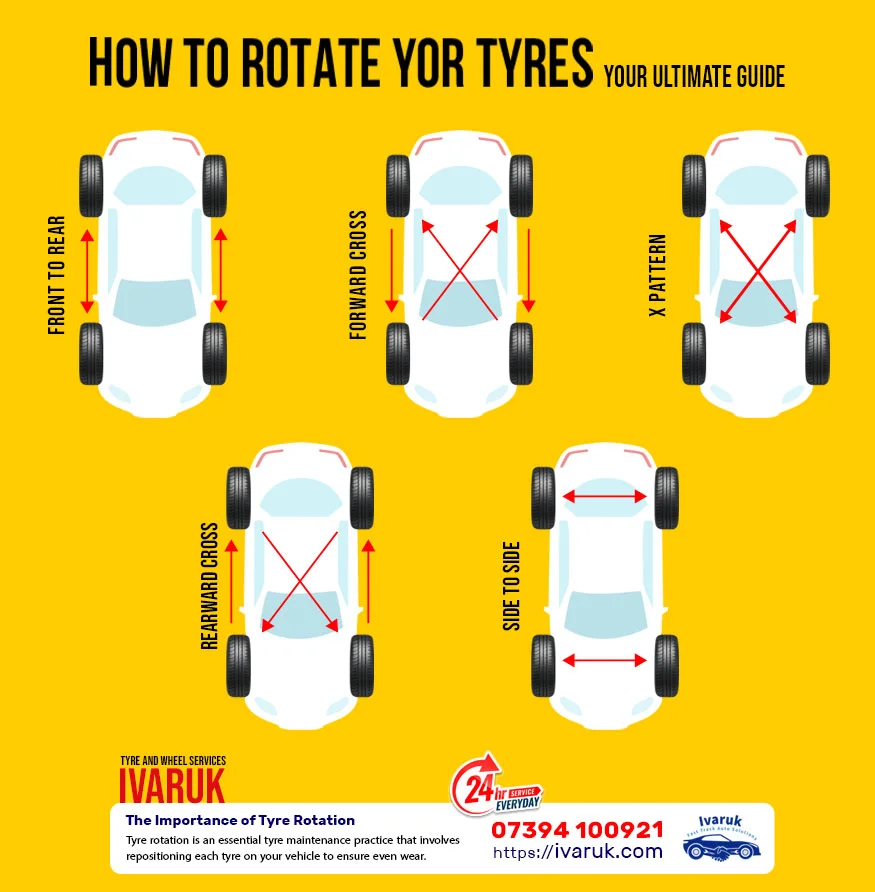
Proper tyre rotation is a critical aspect of tyre maintenance, impacting tyre longevity and performance. Don’t overlook this simple procedure with significant benefits. Stay tuned for our next section discussing “Tip 3: Proper Wheel Alignment,” a crucial aspect of tyre maintenance for even wear and optimal handling.
Elevate your driving experience with our expert Tyre Maintenance and Wheel Services.
Don’t miss our competitive UK prices and service guarantee. Contact us now for a tire transformation!
Tip 3: Proper Wheel Alignment
The Importance of Wheel Alignment
Wheel alignment, often referred to as tyre alignment, is a vital aspect of comprehensive tyre maintenance. It involves adjusting your vehicle’s suspension to ensure that all wheels are parallel to each other and perpendicular to the road. Proper wheel alignment offers numerous advantages:
- Even Tyre Wear: Wheel misalignment can lead to uneven tyre wear, causing some parts of your tyres to wear faster than others, necessitating premature replacement.
- Improved Handling: Vehicles with proper wheel alignment are easier to control and handle better, especially during turns and on uneven road surfaces.
- Fuel Efficiency: Misaligned wheels increase rolling resistance, reducing fuel efficiency. Proper alignment helps your vehicle move more efficiently, saving on fuel costs.
- Enhanced Safety: Accurate wheel alignment contributes to better stability, reducing the risk of accidents, particularly during emergency manoeuvres.
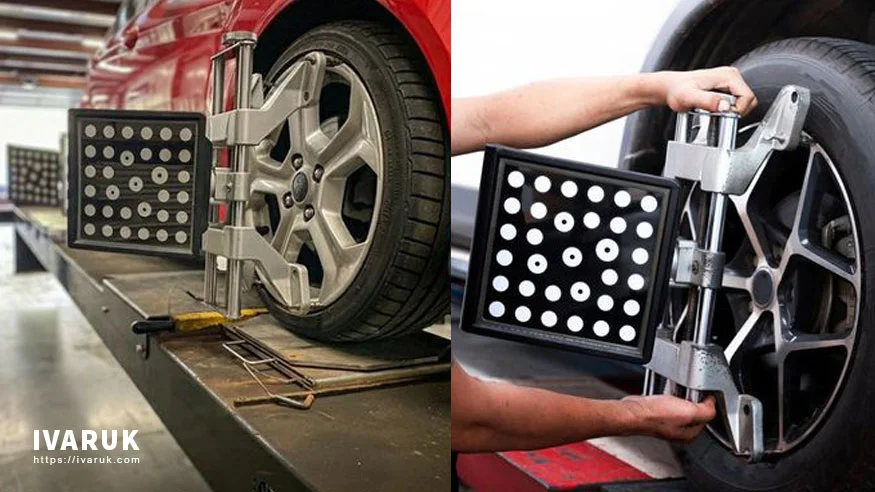
Signs of Misaligned Wheels
Recognizing signs of misaligned wheels is essential for timely maintenance. Watch for these indicators:
- Uneven Tyre Wear: Check for uneven wear patterns on your tyres, such as excessive wear on the inner or outer edges.
- Steering Pull: If your vehicle veers to one side on a straight road, it may indicate misalignment.
- Off-Center Steering Wheel: Misalignment can cause the steering wheel to be off-centre when driving straight.
- Vibrations or Steering Wheel Wobble: Vibrations or wobbling in the steering wheel, especially at higher speeds, may suggest wheel misalignment.
How to Check and Correct Wheel Alignment
Checking and correcting wheel alignment requires specialized equipment and professional expertise. Here’s how the process typically works:
Professional Inspection: Visit a qualified mechanic or alignment specialist who will use alignment equipment to assess your vehicle’s alignment status.
Adjustment: If misalignment is detected, the technician will make necessary adjustments to the suspension components to realign the wheels properly.
Test Drive: After adjustments, a test drive ensures that the vehicle handles correctly and the steering wheel is centred.
Benefits of Regular Wheel Alignment
Regular wheel alignment checks offer numerous benefits:
- Extended Tyre Lifespan: Proper alignment promotes even tyre wear, prolonging tyre life.
- Better Handling: Your vehicle handles better, providing a smoother and safer ride.
- Improved Fuel Efficiency: Correct alignment reduces rolling resistance, enhancing fuel efficiency.
- Enhanced Safety: Proper alignment contributes to vehicle stability and safety.
Incorporating regular wheel alignment checks into your tyre maintenance routine is essential for maximizing tyre lifespan and maintaining optimal vehicle performance.
Tip 4: Balance Your Tyres
The Importance of Tyre Balancing
Tyre balancing is a crucial aspect of comprehensive tyre maintenance, ensuring that the weight distribution of a tyre and wheel assembly is even. Properly balanced tyres offer several essential advantages:
- Even Tyre Wear: Unbalanced tyres can lead to uneven wear patterns, resulting in premature tyre replacement.
- Smoother Ride: Balanced tyres reduce vibrations, enhancing driving comfort and overall experience.
- Enhanced Safety: Reduced vibrations contribute to improved vehicle stability and control, enhancing safety.
- Improved Handling: Properly balanced tyres maintain optimal handling and responsiveness, crucial during turns and high-speed driving.
Signs of Unbalanced Tyres
Recognizing signs of unbalanced tyres is vital for addressing issues promptly. Keep an eye out for these indicators:
- Vibration: Steering wheel or vehicle vibrations may indicate tyre imbalance.
- Uneven Tyre Wear: Inspect tyres for irregular wear patterns caused by imbalances.
- Steering Pull: A vehicle may drift to one side if the tyres are significantly out of balance.
How Tyre Balancing Works
Tyre balancing is typically conducted by trained technicians using specialized equipment. Here’s an overview of the process:
- Inspection: Technicians inspect tyres and wheels for signs of imbalance, identifying weights requiring adjustment.
- Weights: Small weights are strategically added to the wheel rim to counteract imbalances, ensuring even weight distribution.
- Balancing Machine: A balancing machine determines the precise weight amount and location for each tyre.
- Testing: After adding weights, technicians spin the tyre and wheel assembly to verify proper balance.
Benefits of Regular Tyre Balancing
Regular tyre balancing offers numerous advantages:
- Even Tyre Wear: Balanced tyres wear evenly, extending their lifespan and reducing replacement costs.
- Smoother Ride: Reduced vibrations result in a more comfortable driving experience.
- Enhanced Safety: Improved stability and control contribute to safer driving.
- Better Handling: Properly balanced tyres maintain optimal handling and responsiveness.
Incorporating regular tyre balancing into your tyre maintenance routine is essential for maximizing tyre lifespan, ensuring a comfortable ride, and maintaining vehicle safety.
Tip 5: Choose the Right Tyres
The Importance of Tyre Selection
Selecting the right tyres for your vehicle is a fundamental aspect of comprehensive tyre maintenance, as it significantly influences performance, safety, and longevity. Here’s why tyre selection plays a crucial role:
- Vehicle Compatibility: Different vehicles require specific tyre sizes and types to operate optimally. Incorrect tyres can impact handling and safety.
- Seasonal Considerations: Depending on your location and driving conditions, you may need all-season, summer, winter, or performance tyres to ensure safety and optimal performance.
- Tread Pattern: Tyre tread patterns vary, affecting traction, handling, and performance in various conditions, including wet, snowy, or icy roads.
- Load and Speed Ratings: Tyres come with load and speed ratings that must align with your vehicle’s requirements. Mismatched ratings can lead to tyre failure.

How to Choose the Right Tyres
Selecting the right tyres involves considering several critical factors:
- Vehicle Specifications: Refer to your vehicle’s owner’s manual or the manufacturer’s recommendations to determine the correct tyre size, load rating, and speed rating.
- Driving Conditions: Consider the typical weather and road conditions in your area, choosing tyres suitable for the seasons and terrain you encounter.
- Tread Pattern: Select a tread pattern that offers the necessary traction based on your needs. For example, deep treads are ideal for off-road use, while low-profile tyres are suitable for performance.
- Brand and Model: Research reputable tyre brands and models that are known for quality and durability, utilizing customer reviews and expert recommendations.
- Budget: Balance your tyre selection with your budget, as there are options available for various price ranges.
Benefits of Choosing the Right Tyres
Selecting the appropriate tyres offers numerous advantages:
- Enhanced Safety: Properly matched tyres provide optimal traction and handling for your vehicle and specific driving conditions.
- Improved Performance: The right tyres can enhance your vehicle’s overall performance, including acceleration, braking, and cornering.
- Extended Lifespan: Tyres that match your vehicle’s specifications are likely to wear evenly, leading to a longer lifespan.
- Fuel Efficiency: Some tyres are designed to improve fuel efficiency, potentially saving you money on gas.
Taking the time to research and choose the right tyres for your vehicle is a proactive step in tyre maintenance that can result in a safer and more enjoyable driving experience.
Tip 6: Maintain Proper Tyre Tread
The Importance of Tyre Tread
Tyre tread is the pattern of grooves and channels on a tyre’s surface that makes direct contact with the road. Ensuring proper tyre tread maintenance is essential for various critical reasons:
- Traction: The tread pattern provides essential grip on the road, especially in adverse conditions like wet, snowy, or icy roads, preventing slipping and sliding.
- Water Dispersion: Tread channels water away from the tyre’s contact patch, reducing the risk of hydroplaning on wet roads.
- Braking and Handling: Adequate tread depth ensures that your vehicle can stop safely and handle well in various driving conditions.
- Tyre Longevity: Maintaining proper tyre tread helps ensure even wear and extends the lifespan of your tyres.
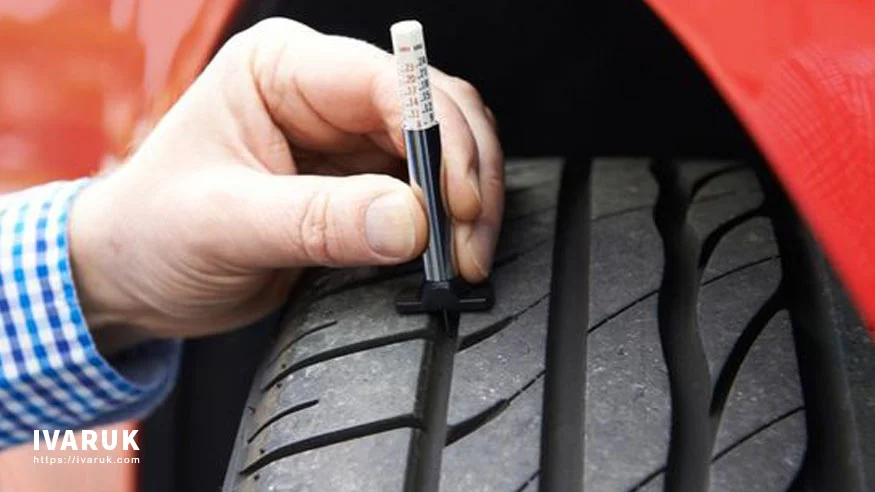
How to Check Tyre Tread
Checking your tyre tread is a straightforward process:
Tread Depth Gauge: Use a tread depth gauge to measure the depth of the tyre tread. Alternatively, perform the “penny test” by inserting a penny into the tread with Lincoln’s head facing down. If you can see the top of Lincoln’s head, it’s time to replace the tyre.
Tread Wear Indicators: Most modern tyres feature built-in tread wear indicators. These small rubber bars become visible as the tread wears down. If you spot these indicators, it’s time for a tyre replacement.
Visual Inspection: Visually inspect the tyre tread for signs of uneven wear, damage, or foreign objects embedded in the tread.
Benefits of Proper Tyre Tread Maintenance
Maintaining proper tyre tread offers several advantages:
- Safety: Adequate tread depth ensures optimal traction and handling, reducing the risk of accidents.
- Performance: Proper tread allows your vehicle to perform well in various weather and road conditions.
- Longevity: Even tyre wear, achieved through tread maintenance, extends the lifespan of your tyres.
- Fuel Efficiency: Good traction reduces rolling resistance, potentially improving fuel efficiency.
Regularly checking and maintaining proper tyre tread is a simple yet effective way to ensure your safety on the road and maximize the lifespan of your tyres.
Tip 7: Avoid Overloading Your Vehicle
The Importance of Avoiding Overloading
Overloading your vehicle with excessive weight can have detrimental effects on both your tyres and overall vehicle safety. Here’s why avoiding overloading is crucial:
- Tyre Stress: When a vehicle is overloaded, the extra weight places significant stress on the tyres. This can lead to accelerated wear, reduced handling, and an increased risk of blowouts.
- Handling and Braking: Overloaded vehicles have reduced handling capabilities, making them less responsive to steering and braking inputs. This can be particularly dangerous in emergency situations.
- Suspension Damage: Excess weight can damage your vehicle’s suspension components, leading to costly repairs.
- Legal Implications: Overloading your vehicle may violate weight restrictions and result in legal consequences, including fines.
How to Avoid Overloading
To avoid overloading your vehicle:
- Check the Manufacturer’s Rating: Refer to your vehicle’s owner’s manual to find the manufacturer’s maximum load capacity and recommended tyre pressure for various load conditions.
- Weigh Your Cargo: Before loading up your vehicle, determine the total weight of passengers and cargo to ensure it does not exceed the vehicle’s capacity.
- Distribute Weight Evenly: Distribute weight evenly within the vehicle to maintain proper balance and handling. Use cargo nets or dividers if necessary.
- Use Roof Racks and Trailers: If you need to transport additional items, consider using roof racks or trailers designed for your vehicle.
- Check Tyre Load Ratings: Ensure that your tyres have a sufficient load-carrying capacity to handle the weight of your vehicle and its cargo.
Benefits of Avoiding Overloading
Avoiding overloading your vehicle offers several benefits:
- Tyre Longevity: By staying within the recommended load limits, you reduce the stress on your tyres, extending their lifespan.
- Safety: Properly loaded vehicles handle better and are less prone to accidents, ensuring your safety and the safety of others on the road.
- Reduced Maintenance Costs: Avoiding overloading helps prevent damage to your vehicle’s suspension and other components, reducing maintenance and repair expenses.
- Legal Compliance: Staying within weight limits ensures that you comply with legal regulations and avoid potential fines.
Remember that overloading your vehicle is a risk that can compromise your safety and the lifespan of your tyres. By following load limits and proper weight distribution, you’ll enjoy a safer and more economical driving experience.
Tip 8: Drive Smoothly to Prolong Tyre Lifespan
The Significance of Smooth Driving
Your driving habits wield a direct influence on your tyre’s durability and performance. Practising smooth driving not only extends the lifespan of your tyres but also enhances overall vehicle efficiency and safety. Here’s why smooth driving matters.
- Even Tyre Wear: Abrupt acceleration, harsh braking, and aggressive cornering can lead to uneven tyre wear. Smooth driving promotes uniform wear across your tyres.
- Enhanced Fuel Efficiency: Aggressive driving, marked by rapid acceleration and sudden stops, heightens fuel consumption. Smooth driving can enhance your vehicle’s fuel efficiency.
- Reduced Heat Buildup: Hard braking and rapid acceleration generate heat in the tyres, potentially causing premature tyre ageing. Smooth driving minimizes heat buildup.
- Augmented Safety: Smooth driving reduces the likelihood of accidents, especially during adverse weather conditions when traction is crucial.
How to Drive Smoothly
To drive smoothly and extend your tyre’s lifespan.
- Gradual Acceleration: Avoid rapid acceleration. Gradually increase your speed to reduce stress on your tyres.
- Gentle Braking: When slowing down or coming to a stop, brake smoothly and progressively. Avoid slamming on the brakes.
- Maintain a Safe Following Distance: Maintain a safe distance from the vehicle in front of you. This allows for gradual braking and prevents sudden stops.
- Cautious Cornering: Approach corners at a moderate speed and smoothly steer through turns. Avoid sharp or aggressive steering.
- Avoid Obstacles: Whenever possible, steer clear of potholes, debris, and road hazards to prevent tyre damage.
Benefits of Smooth Driving
Embracing smooth driving practices offers several advantages.
- Extended Tyre Lifespan: Smooth driving habits encourage even tyre wear, increasing tyre longevity.
- Improved Fuel Efficiency: Gradual acceleration and smooth braking reduce fuel consumption.
- Enhanced Safety: Smooth driving reduces the risk of accidents and enhances overall road safety.
- Reduced Maintenance Costs: By minimizing stress on your tyres and vehicle components, you’ll save on maintenance and repair expenses.
Incorporating smooth driving habits into your daily routine not only benefits your tyres but also elevates your overall driving experience while contributing to safety and efficiency.
Tip 9: Proper Tyre Storage
The Significance of Proper Tyre Storage
Tyre storage is a critical facet of tyre maintenance, particularly if you possess seasonal tyres that are not in use year-round. Adequate storage ensures that your tyres remain in prime condition and are safe to use when required. Here’s why proper tyre storage matters.
- Prolong Tyre Lifespan: Storing tyres correctly prevents premature deterioration due to exposure to the elements, such as sunlight and extreme temperatures.
- Preserve Rubber Quality: Tyres can degrade over time if not stored properly, resulting in cracking, dry rot, and reduced performance.
- Maintains Safety: Properly stored tyres are less susceptible to structural damage, which can lead to blowouts or other safety hazards.
- Saves Money: By extending your tyres’ lifespan through proper storage, you’ll reduce the need for replacements and save money in the long run.
How to Store Tyres Properly
To store tyres properly.
- Clean the Tyres: Before storing, clean the tyres with mild soap and water to remove dirt, brake dust, and road grime. Dry them thoroughly.
- Check Tyre Pressure: Inflate the tyres to the manufacturer’s recommended pressure to help prevent flat spots from forming during storage.
- Store in a Cool, Dry Place: Find a cool, dry, and well-ventilated storage area away from direct sunlight and sources of heat. Excessive heat can accelerate tyre ageing.
- Use Tyre Covers: Consider using tyre covers to shield the tyres from dust, UV rays, and moisture. If covers are unavailable, black plastic trash bags can serve as a temporary solution.
- Store Upright or Suspended: If feasible, store tyres upright or suspend them from hooks. Avoid stacking heavy objects on top of the tyres, as this can cause deformation.
- Rotate Tyres Periodically: If you have seasonal tyres that will be in storage for an extended period, rotate them every six months to prevent flat spots.
- Inspect Before Reinstalling: Before reinstalling the tyres on your vehicle, inspect them for signs of damage, such as cracks or punctures. Replace damaged tyres as needed.
Benefits of Proper Tyre Storage
Proper tyre storage offers several benefits.
- Extended Lifespan: Tyres that are stored correctly last longer and perform better.
- Preserved Rubber Quality: Correct storage prevents rubber degradation, such as cracking and dry rot.
- Enhanced Safety: Well-maintained tyres are safer to use, reducing the risk of blowouts and accidents.
- Cost Savings: By preserving your tyres, you’ll save money on replacements and repairs.
Taking the time to store your tyres properly when they are not in use is a proactive step in tyre maintenance that pays off in the long run.
Tip 10: Conduct Regular Tyre Inspections
The Significance of Tyre Inspections
Regular tyre inspections form a fundamental part of tyre maintenance. These inspections help you identify issues early, ensuring your tyres remain safe and roadworthy.

Here’s why tyre inspections are crucial.
- Safety: Inspecting your tyres helps identify damage or wear that could compromise your safety on the road.
- Early Problem Detection: Regular inspections enable you to catch and address issues early, preventing more extensive damage or costly repairs.
- Improved Tyre Lifespan: Identifying and addressing problems promptly can extend the lifespan of your tyres.
- Enhanced Performance: Properly maintained tyres contribute to better handling, fuel efficiency, and overall vehicle performance.
How to Conduct Tyre Inspections
To perform regular tyre inspections.
- Visual Inspection: Examine each tyre visually for signs of damage, such as cuts, punctures, bulges, or cracks. Check the sidewalls and tread.
- Check Tread Depth: Measure the tread depth using a tread depth gauge or the “penny test.” Ensure the tread depth meets the recommended minimum depth for safe driving.
- Monitor Tyre Pressure: Regularly check and maintain proper tyre pressure. Use a reliable tyre pressure gauge and refer to your vehicle’s manual for the recommended pressure levels.
- Look for Uneven Wear: Inspect the tread for uneven wear patterns, which could indicate alignment or suspension issues. Address these problems promptly.
- Check for Embedded Objects: Examine the tyre surface for any foreign objects like nails or debris that may have become lodged in the tread.
- Inspect Valve Stems: Ensure that valve stems are in good condition and not damaged or leaking air.
- Rotate Tyres: If you have not rotated your tyres recently, consider doing so to promote even wear.
- Balance and Align: If you notice uneven wear or handling issues, have your tyres balanced and aligned by a professional.
Benefits of Regular Tyre Inspections
Regular tyre inspections offer several benefits.
- Safety: Inspections help identify potential safety hazards, reducing the risk of accidents.
- Early Problem Detection: Detecting and addressing issues early prevents more significant problems and costly repairs.
- Longer Lifespan: Well-maintained tyres last longer, reducing the frequency of replacements.
- Optimized Performance: Properly maintained tyres contribute to better vehicle handling and fuel efficiency.
Incorporating regular tyre inspections into your maintenance routine is a proactive step that promotes both the safety and longevity of your tyres.
Tip 11: Seek Professional Tyre Maintenance for Optimal Care
The Importance of Professional Tyre Maintenance
While many aspects of tyre maintenance can be performed by vehicle owners, there are times when seeking professional assistance is essential. Professional tyre maintenance ensures that complex issues are addressed correctly, keeping your tyres in optimal condition. Here’s why professional tyre maintenance matters:
- Expertise: Professional technicians possess the expertise and specialized equipment to diagnose and resolve complex tyre issues, including alignment problems and tyre balancing.
- Precision: Professional maintenance is precise, ensuring that tyres are balanced, aligned, and repaired to factory specifications.
- Safety: Professional inspections can identify hidden issues that may compromise your safety on the road.
- Warranty Compliance: For tyres under warranty, professional maintenance may be required to maintain warranty coverage.
When to Seek Professional Assistance
Consider seeking professional tyre maintenance under the following circumstances.
- Alignment Issues: If you notice steering problems, uneven tyre wear, or your vehicle pulling to one side, it’s time for a professional alignment check and adjustment.
- Balancing Problems: Experience vibrations at certain speeds or have recently replaced or rotated tyres? Professional balancing may be necessary.
- Complex Repairs: Punctures or damage in the tyre sidewall or shoulder require professional repairs, as such damage is often not repairable.
- Low Tread Depth: If your tyres have worn down to a dangerously low tread depth or the wear is uneven, consult a professional for recommendations.
- Tyre Replacement: When it’s time to replace tyres, professionals can recommend suitable replacements based on your vehicle and driving needs.
- Seasonal Tyre Changes: If you switch between seasonal tyres (e.g., summer and winter tyres), professional installation and balancing ensure safety and optimal performance.
Benefits of Professional Tyre Maintenance
Professional tyre maintenance offers several benefits:
- Safety: Professional inspections and adjustments contribute to safer driving by addressing hidden issues.
- Optimal Performance: Precise balancing, alignment, and repairs ensure your tyres perform as intended.
- Extended Lifespan: Properly maintained tyres last longer, reducing the frequency of replacements.
- Warranty Compliance: Professional maintenance may be required to maintain tyre warranties.
Incorporating professional tyre maintenance into your overall tyre care routine is essential for addressing complex issues and ensuring the ongoing safety and performance of your tyres.
Tip 12: Regularly Check for Signs of Damage to Safeguard Your Tyres
The Importance of Checking for Damage
Regularly inspecting your tyres for signs of damage is a crucial part of tyre maintenance. Identifying and addressing damage early can prevent more extensive issues and ensure your safety on the road. Here’s why checking for damage is essential.
- Safety: Damaged tyres are a safety hazard. Punctures, cuts, bulges, or cracks can lead to blowouts or loss of control while driving.
- Prevents Further Damage: Promptly addressing damage prevents it from worsening. A small puncture, if left unattended, can expand into a larger, irreparable problem.
- Extends Tyre Lifespan: By catching and repairing minor damage early, you can extend the life of your tyres, saving you money on replacements.
- Ensures Proper Performance: Healthy tyres provide better traction, handling, and braking performance, contributing to overall road safety.
How to Check for Signs of Damage
To check your tyres for signs of damage:
- Visual Inspection: Regularly examine each tyre’s sidewalls and tread for any visible signs of damage, such as cuts, punctures, bulges, or cracks.
- Feel for Irregularities: Run your hand along the tyre’s surface to feel for any abnormalities or objects embedded in the tread.
- Listen for Unusual Noises: Pay attention to any unusual noises, such as hissing, that may indicate a slow leak from a puncture.
- Monitor Tyre Pressure: A sudden drop in tyre pressure can be a sign of damage. Check your tyre pressure regularly to detect any significant changes.
- Seek Professional Inspection: If you’re unsure about the extent of damage or notice concerning issues, consult a professional tyre technician for a thorough inspection.
Benefits of Regular Damage Checks
Regularly checking for signs of damage offers several benefits:
- Safety: Identifying and addressing damage promptly ensures safer driving by preventing accidents related to tyre issues.
- Prevents Further Damage: Addressing minor damage prevents it from escalating into more significant and costly problems.
- Longer Tyre Lifespan: Properly maintained tyres last longer, reducing the frequency of replacements.
- Optimized Performance: Healthy tyres provide better handling and braking performance, contributing to overall road safety.
By incorporating regular damage checks into your tyre maintenance routine, you’re taking a proactive step in ensuring your safety on the road and the longevity of your tyres.
Final summary about tyre maintenance
In the world of vehicle ownership, few responsibilities rival the importance of tyre maintenance. This comprehensive guide covers everything from selecting the right tyres to regular inspections.
We also stress the significance of proper tyre storage and promptly addressing any damage. Ultimately, responsible tyre maintenance leads to safer, smoother, and more economical journeys.

